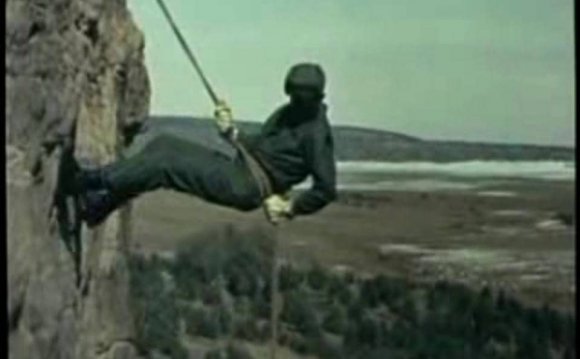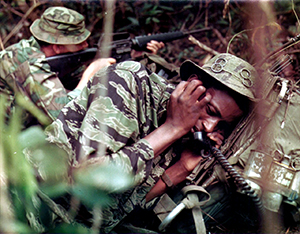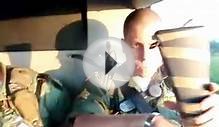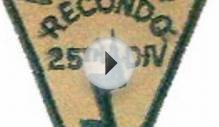
Who had been the fiercest set of warriors in National Guard record? Some could argue it had been the Overmountain guys of American Revolution, Young’s Scouts, who fought Philippine insurgents in 1898, the Harlem Hellfighters of World War I, the Bedford Boys of D-Day, Raven 42 in Iraq or a host of other people. On any number, the Indiana Rangers deserve someplace close to the top.
Unlike Operations Iraqi and Enduring Freedom, the National Guard did not deploy in large numbers throughout the Vietnam War. Whenever combat peaked in 1968 with 530, 000 solution users in theater, the Pentagon decided to partly mobilize the Guard. Above 12, 000 Guard troops were mobilized in May 1968, with 7, 000 in the course of time providing in Vietnam. Really the only Guard infantry device to deploy had been Indiana’s D Company, 151st Infantry (Long Range Patrol).
 Sergeant Curtis Hester and Sergeant Billy Faulks during a firefight. Army photosThese 204 guys were not your ordinary infantry troops. First of all, the complete device was Airborne-qualified. And before this deployment, they'd just completed the Army’s Jungle Warfare Training School into the Panama Canal Zone, in which 97 percent of guys obtained the Jungle Professional Badge, the best portion of every reserve-component product.
Sergeant Curtis Hester and Sergeant Billy Faulks during a firefight. Army photosThese 204 guys were not your ordinary infantry troops. First of all, the complete device was Airborne-qualified. And before this deployment, they'd just completed the Army’s Jungle Warfare Training School into the Panama Canal Zone, in which 97 percent of guys obtained the Jungle Professional Badge, the best portion of every reserve-component product.
“We had been the most-trained unit in Vietnam. Several of us had 2-3 MOSs (army occupational areas), and we had been one hundred percent Airborne-qualified, ” said professional Larry Rhodes of D Company,
Before traveling to Vietnam, the organization had been stated “the best-trained unit in its record” by the U.S. Infantry School.
The Indiana Rangers found its way to Bien Hoa, Vietnam, on December 28, 1968. They were assigned towards the U.S. Army’s II Field power, whoever goal was patrolling and reconnaissance for Long Binh armed forces base and safety for Bien Hoa Air Base, close to the capital town of Saigon. The Rangers nicknamed their particular base camp Camp Atterbury East, after the National Guard camp in Edinburgh, Indiana, where they often trained before mobilization.
They shortly started intense long-range patrolling and mission-specific instruction alongside F business, 51st Infantry—the regular Army device these were replacing.
During the company’s very first patrol, an M60 machine gunner had been hurt, receiving the unit’s very first Purple Heart.
By early February 1969, the Rangers were operating on their own, gathering intelligence and ambushing enemy units. They became the “eyes and ears” of II Field Force, offering long-range reconnaissance and target acquisition against enemy forces. Occasionally, they would patrol to present base security, getting inserted to validate intelligence and then phoning in artillery fire or tactical atmosphere support.
Through the first couple of months of patrolling, many D business troops went to the elite armed forces help Command Vietnam Recondo School in Nha Trang, that was operate by the fifth specialized Forces Group.
“At enough time, it had been truly the only college making it possible to speak to the enemy and possibly get shot, ” said Specialist Jerome Crawford, a class attendee and a Ranger with D Company.
Within the next 10 months, 12 to 18 Ranger groups would patrol continuously, making a total of 802 patrols behind opponent lines.
“Each soldier averaged about 30 missions, ” Rhodes says.
In accordance with Lieutenant General John H. Hay Jr., deputy commanding basic of II Field power, long-range Patrols (later known as LRRPs, or Long Range Reconnaissance Patrols) had been “generally regarded as possess many uncomfortable and dangerous work in Vietnam.” Hay died in 1995.
People in D Company regularly carried enough gear so they could function for a number of times without the outdoors help. Photo from Indiana nationwide Guard Public AffairsThroughout the deployment, D Company made experience of the opponent 126 times, leading to 97 verified enemy combatants killed. In addition they called in two B-52 Stratofortress strikes, 53 airstrikes and 139 artillery missions, killing countless opponent combatants.
One goal happened on February 14. Believing there is an enemy buildup getting ready to attack near extended Binh, two Ranger patrols were placed in to the area. The initial team took fire immediately upon leaving the helicopter. Shortly after the next staff landed, both teams had been in heavy experience of a sizable enemy power. The Rangers, recognizing they had inserted onto an enemy base camp and feasible rocket-launching website, called in artillery and airstrikes. More than 85 additional explosions had been reported, destroying many adversary ammunition caches.
Inspite of the risk, some Rangers liked being on patrol. “You could manage what happens a lot better than just staying at camp, ” Rhodes stated.
Due to these bold missions, the Indiana Rangers would come to be one of the most decorated infantry companies in Army, with over 500 individual accessories. Nineteen soldiers had been awarded the Silver celebrity. The system received 175 Bronze performers, with 87 V devices for valor, 120 Air Medals and 110 Purple Hearts. The Rangers in addition received numerous Army Commendation medals, including 57 aided by the V device.
Sergeant high grade William Butler, a 39-year-old owner-operator of a little trucking company, ended up being one of many troops which obtained the Silver celebrity. On August 14, Butler was the assistant patrol frontrunner of a five-man reconnaissance team lying in an ambush website along an enemy path.
Because they waited, two opponent combatants relocated in to the area about 60 meters away. As Rangers ready to open-fire, five more adversary combatants came into view. Still, the Rangers had the component of shock, so they initiated the ambush.
Butler and his staff instantly began taking heavy return fire, plus the adversary force expanded to about 35 combatants. The Vietnamese fired automatic weapons, small-arms and rocket-propelled grenades on little team of Rangers, wounding Butler.
Disregarding their injuries, he maneuvered toward and fired on a two-man enemy RPG staff, killing both. Air help ended up being called into destroy opponent roles while Butler along with his team proceeded firing within adversary combatants until both causes broke contact. The Silver Star Butler had been awarded for their activities ended up being their second—he received his very first throughout the Korean War. After returning from Vietnam, a reporter asked him just what he did to earn the honor. His reaction: “i recently been truth be told there.”
YOU MIGHT ALSO LIKE












